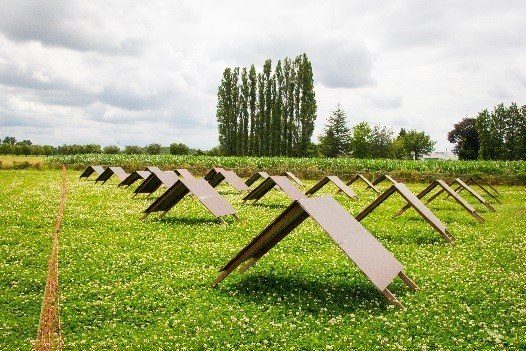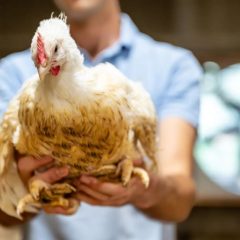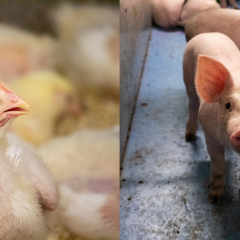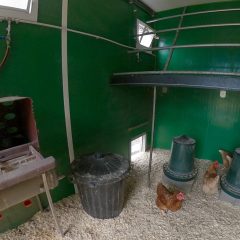Research project Mobile housing systems for laying hens and broiler chickens

General introduction
What are the pros and cons, the opportunities and issues with mobile housing systems for laying hens and broiler chickens? Which factors determine their use of the free range? This research aims to increase our empirical knowledge about the behaviour and welfare of poultry, production performance and system profitability, innovative agricultural systems (combining free-range with plant/crop production), landscape management, environmental impact, and food safety (such as heavy metals and dioxins in eggs).
Research approach
In the present project, we investigate which variables influence the use of the outdoor range by broiler chickens. Variables that are being investigated in this experiment are: weather conditions, shelter, age, and age at which the chickens are allowed access to the outdoor range for the first time. Each of the four outdoor areas consists of four equal parts. Half offer shelter (movable wooden panels) and half are barren. We monitor the use of the outdoor area during different times of the day and different seasons by quantifying excreta at various locations and by direct observation. A mobile weather station collects climatic data.
Relevance/Valorization
Citizens are increasingly concerned about animal welfare and a growing number of consumers are prepared to pay a premium price for animal-friendly produced eggs or meat. Citizens associate access to an outdoor area with good animal welfare. On commercial outdoor farms, however, only 15% of the chickens actually use the outdoor area and if they do, they predominantly remain in the vicinity of the barn. A greater and more homogeneous use of the outdoor area would benefit the welfare of the animals and reduce their environmental impact (better spread of faecal pollutants). Mobile housing systems are useful for conducting research on ranging behaviour and have great commercial potential which is not presently used in Flanders. These housing systems are particularly appropriate for small-scale and organic production. In these systems, the maximum allowed stocking density is higher, the risk of disease contamination and environmental pollution due to accumulation of faeces in a small area is lower, and they offer interesting possibilities for combining an outdoor livestock area with plant production.







